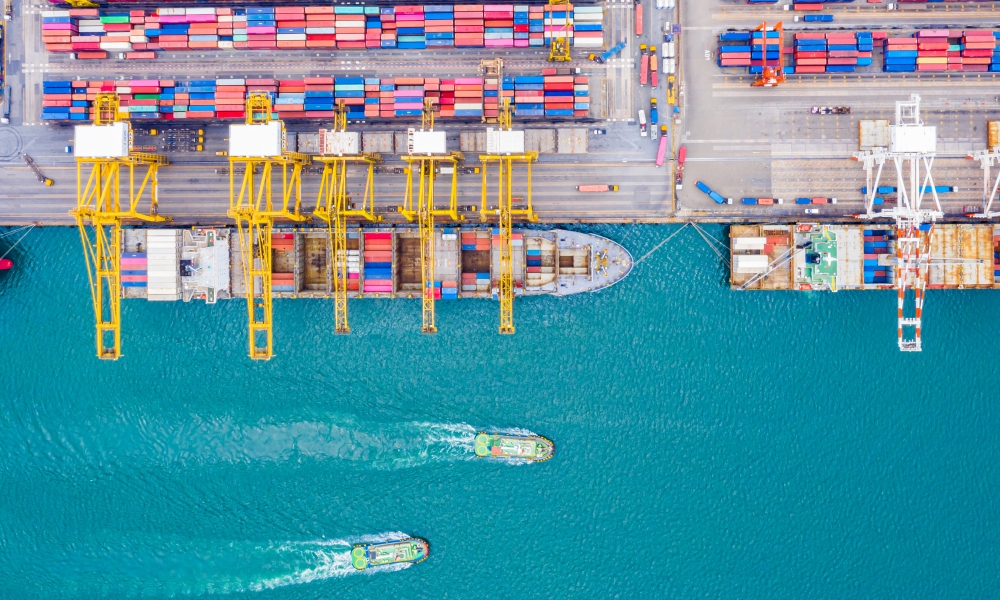The future of the global green ammonia industry for shipping
22
Feb

The United Nations International Maritime Organization (IMO) has recently set an updated target to reach net-zero GHG emissions by or around 2050. This Sprint brought together experts in green ammonia production, shipping and transport infrastructure planning, climate mitigation and economic analysis to determine a pathway the industries and governments can follow to transition the industry to green ammonia.
This webinar will present the team’s findings on future scenarios of global ammonia production and ship fuelling.
The event is aimed at an audience of stakeholders from industry, policymakers, shipping companies, port authorities, regulatory bodies, finance institutions, NGOs, researchers and other stakeholders working on decarbonisation in the shipping, energy and other closely related industries.
All are welcome! Join us to hear about:
- The context around this Sprint
- The modelling and key results
- Sensitivity analysis and the policy implications
- Extensions of the work
- And a Q&A.
Summary of Research
Maritime shipping contributes 3% of global anthropogenic GHG emissions from its dominant use of Heavy Fuel Oil (HFO), and it is central to the functioning of the global economy, handling around 80% of global trade by volume. In 2023, the International Maritime Organisation (IMO) ramped up its Greenhouse Gas (GHG) reduction ambitions, setting a target to reach net zero emissions by 2050 (from a 50% reduction previously), with interim goals of at least 30% reduction in 2030, and 70% in 2040 (over a 2008 baseline). The shipping industry faces significant challenges in decarbonisation, given its long asset lifetimes, price competitiveness between HFO and green alternatives, and the need for coordination over multiple stakeholders (e.g. engine manufacturers, ports, carriers, production facilities and investors).
Green ammonia (produced using renewable energy) is considered a viable option to decarbonise long-haul shipping, for reasons including its superiority as an energy carrier compared to green alternatives (e.g. hydrogen), potential scalability at low costs, well-developed international markets for ammonia, and ability for production to be expanded without competing for agricultural land.
Despite its technical and economic feasibility, the shipping industry lacks credible scenarios for how a global green ammonia industry for shipping could be configured, where it could be most cost-efficiently produced in the future, how to establish a fuel supply chain, and what the synergies are with the decarbonisation of other hard-to-abate sectors in the domestic and international economy.
- Future scenarios of green ammonia production for shipping[1] By combining a global model of green hydrogen and ammonia production with a global ports and shipping model, we will present the first comprehensive and spatially granular global picture of supply and demand for the future (2050) green ammonia economy. Our model combines a port-level fuel demand model (for 1,360 ports), future shipping trade scenarios, and a spatial optimisation model for green ammonia production, storage, and transport, to find the best global locations to meet future demand for shipping fuel (i.e. it builds a cost-optimal green ammonia fuel supply chain). We also estimate the global investment required, and the optimal investment locations to decarbonise the shipping sector in line with its net zero targets.
- How can global shipping transition to net zero? We will present the policy implications of our results, and what instruments may be effective in unlocking the scale of the ‘green ammonia opportunity’ in the UK and internationally. For the UK, we explore synergies with domestic net zero commitments – for instance, we look at the potential for domestically-produced or imported ammonia to provide storage in the UK electricity system, vis-à-vis alternative options, and more widely, whether there is a case for the UK to be investing in green ammonia (and where). In the international context we run sensitivity analyses to explore the effects of policies in scaling up the supply of green ammonia – for example, the effects of subsidy schemes. We also look at the policy implications of the results for the development of green shipping corridors, their financing and regulation, and the role of Contracts-for-Difference in enabling a market for green ammonia.
Agile Initiative Sprint Team
- René Banares-Alcántara, Dept. of Engineering Science
- Jim Hall, Environmental Change Institute, Dept. of Geography and Environment
- Jasper Verschuur, Environmental Change Institute, Dept. of Geography and Environment
- Carlo Palazzi, Dept. of Engineering Science
- Anupama Sen, Oxford Smith School, Dept. of Geography and Environment
- Aman Majid, Environmental Change Institute, Dept. of Geography and Environment
- Richard Nayak-Luke, Dept. of Eneering Science
The research and policy engagement described in this webinar took place in the Sprint “How can maritime shipping transition to green ammonia as fuel?”, funded by the Natural Environment Research Council as part of the Agile Initiative programme in the University of Oxford, which provides rapid evidence-based solutions to the needs of environmental policy-makers. The interdisciplinary Sprint team formed across Oxford University’s Department of Engineering Science, the School of Geography and the Environment, the Environmental Change Institute, and the Smith School of Enterprise and the Environment, as well as external collaborators from the Department for Transport and other policy-makers, industry, and NGOs.
[1] Results published on 9 January in Verschuur, J., Salmon, N., Hall, J. and Banares-Alcántara, R. (2024) . ‘Optimal fuel supply of green ammonia to decarbonise global shipping’, Environmental Research: Infrastructure and Sustainability, 4, 015001.


